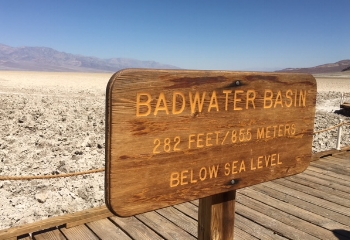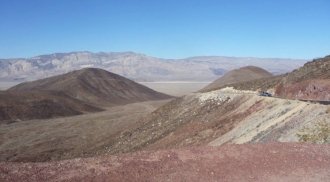Before 2017 is here, I wanted to post a few blogs about my 2016. When I think of this year, my first thoughts hover around a bit of self-pity. My plans for participating in a few cycling and running events were sidelined due to an early season bike accident that left me with a severely fractured elbow and injured shoulder.
With that, came a “disrupted” mental state for some time. It was a long recovery process and one I am actually still contending with, physically and mentally. But so what that there was no finish line for me to cross in 2016? Sometimes we athletes need to view these “life events” as a journey similar to training for a competition. There's a different sense of a finish line (i.e. accomplishment), and perhaps you better appreciate all other things you DO have.
Like the Badwater 135 foot race.
It was my second time to crew at this extremely challenging ultra race that takes place mostly in Death Valley (in mid-July, mind you) and ends en route to Mount Whitney. If you aren’t familiar with the race, you can read the course summary here. I was grateful to serve as 1 of 4 crew members for the lovely Aussie, Sandy Suckling. She’s an amazing masters ultra runner athlete and one of the most light-hearted, upbeat, joyful women I’ve known.
The Badwater 135 race is no joke. It chews people up with its harsh conditions (think extreme heat, wind, desert vast nothingness, desert night cold, altitude thrown into the mix) and is not for the weak-minded. You have to prove you are a badass just to be considered for this race, by the way. Once you get accepted to participate, you better make sure you have a trustworthy crew and they have their stuff together. It is said that crewing for a Badwater athlete can be just as challenging as doing the race itself. Okay, I made that part up, but you can pass that tidbit on to your friends in the next ultra running conversation.
One of my main roles as a crew member was to keep an eye on Sandy’s hydration and food intake. She’s no stranger to competing in ultra running events (or little things like running the 4 Deserts or UTMB!), but she had suffered some nausea and issues surrounding food intake in previous ultras that she hoped she could avoid this time.
With some Metabolic Efficiency Training™ under her belt leading into the race and some careful planning on our part, we had a Nutrition Plan A, Plan B, and Plan C. It is well-known that nutrition and hydration are key elements to a successful race at Badwater. There aren’t many ultra runners who get to train in 115-125 degree heat, in the desert, and then do several climbs to altitude, all for 135 miles on road. The carnage from inadequate or improper nutrition/hydration becomes apparent relatively soon into the race. I’ll leave those details out here.
Nutrition / Hydration prep
Dina taking notes during the race
Badwater 135 starts here
To keep from writing a zillion word blog, I’ll summarize Sandy’s race by saying that she endured one of the hardest races she’s had to date. It wasn’t nutrition that got in her “way”, but severe blisters she incurred after mile 45. A lengthy stop for medical treatment at Panamint Springs (mile 72-ish) got her fixed up enough to give the remainder of the race a go. And she did it. Her ultra mindset kicked in and persevered.
From the sand storm we climbed
From way over there, to way over here
For me, this was yet another amazing crewing experience. One where I get to use my skills as a Sport Dietitian to aid the athlete to reach the coveted finish line without the typical “nutrition-induced carnage” others experience at Badwater and for Sandy, a good nutrition outcome compared to some of her previous race experiences (Note: We did use Plans A through C). As a fellow ultra runner, I also was thrilled to be out there on the road with her to do whatever it took to keep moving forward.
From the desert to the mountain... to the finish.
The crew and the star, Sandy (in the middle), at the finish
-Dina








